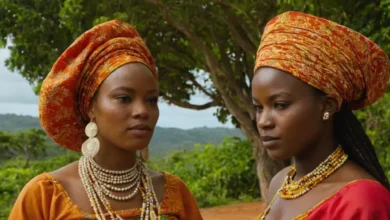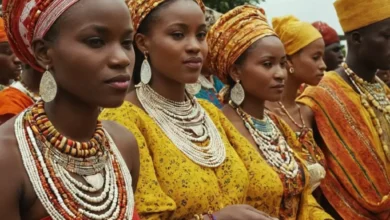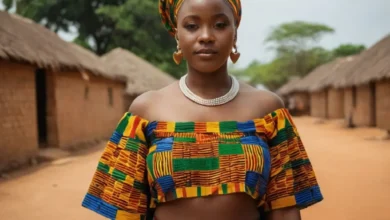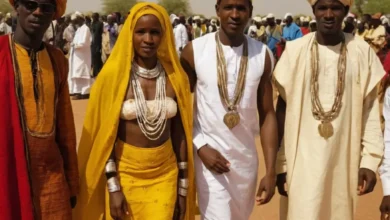Senegalese Traditional Clothing
Senegal, a vibrant nation nestled along the western coast of Africa, is renowned for its rich cultural tapestry woven with tradition, artistry, and vibrant colors. This vibrant culture is beautifully expressed through the country’s traditional clothing, where intricate designs, bold patterns, and symbolic elements speak volumes about the nation’s history, beliefs, and social structure.
The iconic boubous stand as the most recognizable piece of Senegalese attire, exuding grace and sophistication. Beyond the boubous, however, lies a world of diverse garments, each with its unique story to tell. This article delves into the captivating world of Senegalese traditional clothing, exploring the diverse array of garments, their historical significance, and the intricate symbolism they embody.
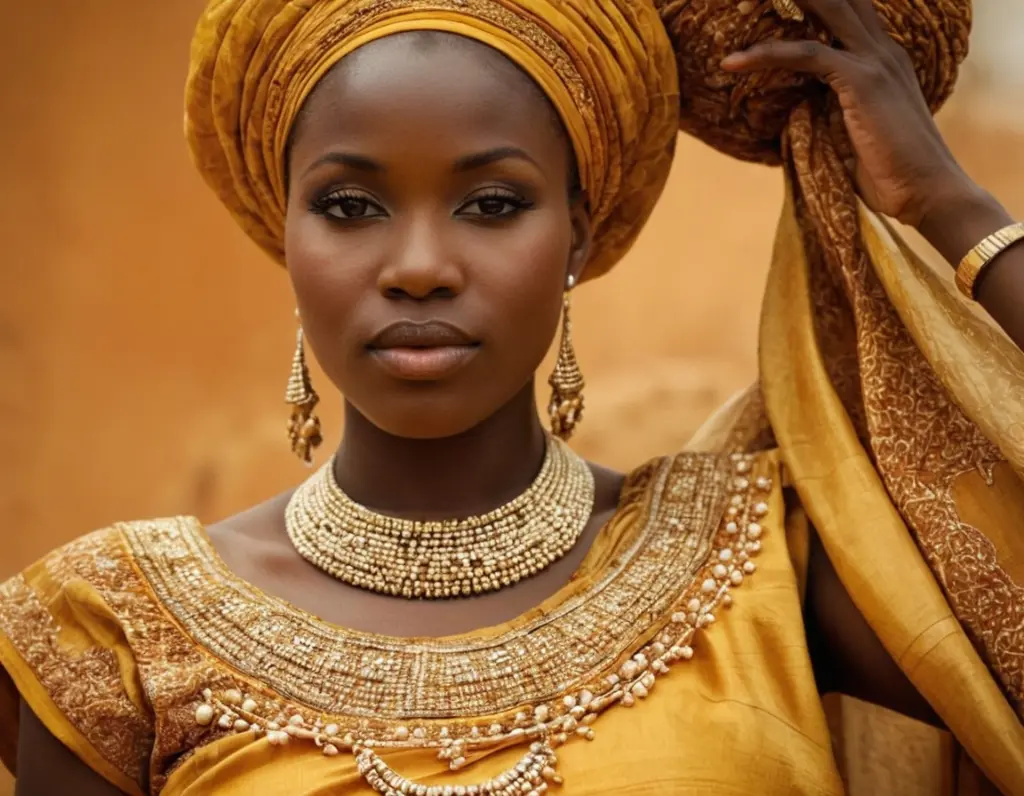
The Ubiquitous Boubou: A Symbol of Elegance and Heritage
Theboubou, a long, loose-fitting robe, is the quintessential garment of Senegal, worn by both men and women. Its origins trace back to the 13th century, with variations evolving over time, reflecting the country’s rich cultural heritage and diverse ethnicities.
- For Men: The male boubou, known as the kaftan or grand boubou, is a graceful garment often adorned with elaborate embroidery and intricate patterns. Typically reaching the ankles, the kaftan is characterized by its wide, flowing sleeves and a deep V-neckline that can be closed with decorative buttons or a sash. It is often paired with a matching or contrastingfoutou, a rectangular cloth wrapped around the waist, and babouches, traditional leather slippers.
- For Women: The female boubou, known as the sabu, is equally elegant, often featuring delicate lace trimmings, intricate beadwork, and vibrant colors. It can range in length from knee-length to floor-length, with variations in sleeve styles and necklines. The sabu is often paired with a colorfulpagne, a woven cloth tied around the waist and draped over the shoulders, creating a captivating visual display.
Symbolism and Occasions
The boubou transcends its aesthetic appeal, holding deep cultural significance. It serves as a symbol of respect, dignity, and social status. In many communities, wearing a boubou is considered a mark of maturity and respectability, signifying a commitment to tradition and cultural values. Boubous are worn for various occasions, from weddings and religious ceremonies to everyday life. The fabric, color, and embellishments often communicate social standing, family lineage, or the specific occasion.
See also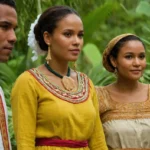 Seychellois Traditional Clothing: A Blend of European, African, and Asian Influences
Seychellois Traditional Clothing: A Blend of European, African, and Asian Influences
The boubou also reflects the rich history of trade and cultural exchange in Senegal. The influence of Arab, French, and other cultural influences is evident in the design and tailoring of the boubou. The intricate embroidery, for example, often features geometric patterns reminiscent of traditional Islamic art.
Beyond the Boubou: A Diverse Spectrum of Garments
While the boubou holds pride of place in Senegalese fashion, it is only one facet of the diverse world of traditional clothing. A wide array of garments, each reflecting unique cultural nuances, enriches the vibrant textile landscape of Senegal.
- The Grand Bazin: A favored fabric for ceremonial occasions, the grand bazin is known for its intricate patterns, vibrant colors, and luxurious texture. It’s often used to create elaborate boubous, dresses, and skirts, adding a touch of grandeur to special events.
- The Pagne: A versatile and ubiquitous garment, the pagne is a woven cloth that plays a vital role in Senegalese culture. It serves as a multi-purpose garment, used as a dress, a skirt, a headwrap, a shawl, or even a tablecloth. The patterns and colors of the pagne often signify a particular region, tribe, or social group.
- The Dashiki: A popular garment among men, the dashiki is a short, colorful shirt with a distinctive V-neckline. It’s a vibrant and comfortable option for casual wear, often adorned with embroidery or intricate patterns.
- The Ndeye: A traditional dress worn by women, the ndeye is a colorful and flowing garment often made from vibrant fabrics like wax prints or brocade. It typically features a wide, flowing skirt and a fitted bodice, often adorned with intricate embroidery or beadwork.
- The Wolof: A distinctive style of clothing worn by the Wolof people of Senegal, the Wolof attire features elaborate embroidery, intricate patterns, and bold colors. The Wolof boubou, for example, is known for its flowing lines and intricate details.
The Art of Senegalese Textiles and Craftsmanship
Beyond the garments themselves, Senegalese traditional clothing is enriched by the artistry of its textiles and craftsmanship. The fabric used in these garments is often handwoven, showcasing the expertise of skilled weavers and artisans.
- Wax Prints: A beloved fabric throughout West Africa, wax prints are known for their vibrant colors, intricate patterns, and enduring popularity. These fabrics are often used to create boubous, dresses, and skirts, adding a touch of color and elegance to any occasion.
- Brocade: A luxurious fabric woven with intricate patterns and metallic threads, brocade is often used for special occasions, adding a touch of opulence to ceremonial clothing.
- Embroidery: A hallmark of Senegalese craftsmanship, embroidery is used to embellish boubous, dresses, and other garments with intricate designs and patterns. The embroidery often features traditional motifs, reflecting the cultural heritage and symbolism of the region.
- Beadwork: Beads are frequently used to adorn Senegalese clothing, adding a touch of sparkle and elegance. The intricate beadwork often features traditional motifs, symbolizing wealth, status, and cultural identity.
The Evolution of Senegalese Traditional Clothing
Senegalese traditional clothing is not static; it is a living tradition that continues to evolve, reflecting the changing social and cultural landscape of the nation. The influence of Western fashion trends, coupled with the creativity of contemporary designers, has led to a hybrid style that embraces tradition while incorporating modern aesthetics.
See also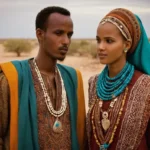 Somali Traditional Clothing: Reflecting Nomadic Heritage and Islamic Influences
Somali Traditional Clothing: Reflecting Nomadic Heritage and Islamic Influences
- Modern Interpretations: Contemporary designers are reinterpreting traditional garments, incorporating modern cuts and silhouettes while preserving the essence of traditional patterns and symbolism. The boubou, for example, is being redesigned into chic and contemporary styles, incorporating modern fabrics and embellishments.
- Fusion Fashion: Senegalese designers are also exploring fusion fashion, blending traditional elements with modern styles to create unique and innovative designs. This fusion of tradition and modernity reflects the dynamism of Senegalese fashion, where heritage and contemporary trends coexist harmoniously.
Preserving the Legacy: The Future of Senegalese Traditional Clothing
The preservation of Senegalese traditional clothing is crucial for safeguarding the nation’s rich cultural heritage. The continued use of traditional fabrics, techniques, and motifs ensures that this vital part of Senegalese identity remains vibrant and relevant for generations to come.
- Supporting Local Artisans: Supporting local artisans and weavers is essential for sustaining the tradition of Senegalese textiles and craftsmanship. By purchasing handmade garments and fabrics, we contribute to the economic well-being of artisans and help preserve their skills and knowledge.
- Promoting Cultural Awareness: Promoting cultural awareness through education and outreach programs plays a vital role in safeguarding Senegalese traditional clothing. By sharing the stories behind the garments, their symbolism, and the craftsmanship involved, we foster appreciation for this rich cultural heritage.
Frequently Asked Questions (FAQs)
What are the different types of boubous?
The most common types of boubous are the kaftan for men and the sabu for women. However, there are regional variations in styles, fabrics, and embellishments, reflecting the diverse cultural heritage of Senegal.
How do I choose the right boubou?
Choosing the right boubou depends on the occasion and your personal style. For formal events, consider a boubou made from luxurious fabrics like grand bazin or brocade, with intricate embroidery or beadwork. For everyday wear, a simpler cotton boubou or a dashiki is a comfortable and stylish option.
Where can I buy Senegalese traditional clothing?
Senegalese traditional clothing can be found at local markets, specialty stores, and online retailers. Many designers and artisans also sell their creations directly, providing a unique opportunity to support local craftsmanship and acquire one-of-a-kind pieces.
The world of Senegalese traditional clothing is a testament to the nation’s rich cultural heritage, artistry, and creativity. From the iconic boubous to the diverse array of garments, each piece tells a unique story, reflecting the history, beliefs, and social structure of Senegal.
As we explore this vibrant tapestry of textiles and craftsmanship, we gain a deeper appreciation for the beauty and significance of Senegalese traditional clothing, a legacy that continues to inspire and captivate generations. By embracing this tradition, we not only celebrate the cultural heritage of Senegal but also support the artistry and craftsmanship that make this nation a vibrant center of creativity.
